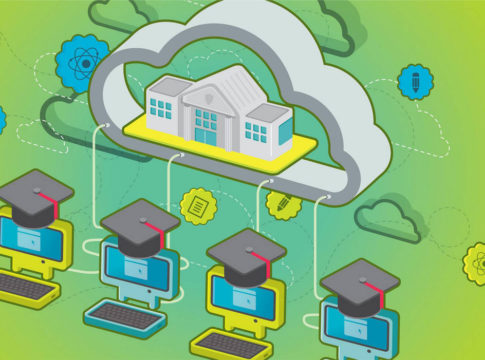Listening to Sal Khan, founder of the Khan Academy, speak on stage to several hundred attendees at the 5th Anniversary Gala last week for Innosight Institute — the non-profit that I co-founded — I thought about how Clayton Christensen and I have speculated for some time that the long-term future of much of educational content will be in the business model of a facilitated network, a platform in which users essentially exchange modular pieces of educational content with each other.
As Khan explained how his team is setting up its network, it reminded me that those who are discounting the long-term value of entities such as the Khan Academy and Knewton, an adaptive learning platform, may be making a significant mistake, as both are positioning themselves to make a run at being the learning platform of the future.
A common rap heard about the Khan Academy is that it’s just a bunch of videos for homework help, nothing more. Even worse, people say, it perpetuates a failed lecture model of learning.
What these critics miss is the evolution of a disruptive innovation — and the steps that the Khan Academy is taking to improve what started as a “good enough” video solution for students who didn’t have access to a tutor.
With 6 million unique visitors a month, the Khan Academy has proved its utility. It’s now seeking to build the best system of micro-assessments anywhere that can be delivered on demand, such that it will be able to ascertain when a student has truly mastered a concept. With that in place, it will then leverage the big data that emerges from its large user base to create a platform that in real time will “learn” what type of educational experience works best for whom.
In the long run this means that Khan’s value won’t be in his videos per se, but in the data created from the system of assessments and learning map of concepts. As I’ve written, the Khan Academy has already invited teachers and MIT students, for example, to create their own videos on the platform, just as Christensen and I predicted a facilitated network would do. With a great data system and assessments in place along with a large user base, the platform will be able to start to do A-B testing between different videos to be able to personalize learning for each student.
The Khan Academy is also expanding beyond just hosting screen capture mini-lectures for students’ direct learning experiences. In its computer science programming modules that launched in August, the platform has moved more toward experimenting with helping students learn by doing. For a long time, Khan has talked about how the use of Khan Academy videos can allow teachers to move beyond lecture mode and the lower levels of Bloom’s taxonomy to help students engage in project-based learning and apply their learning. Now, as Khan has himself said and the move into computer science demonstrates, the Khan Academy is likely to be a place in the future that actively facilitates games, simulations, and project-based learning. I wouldn’t be surprised to see the Khan Academy offering users authoring tools to build these types of experiences themselves at some point either.
Similarly, when Knewton announced in November that it was partnering with Houghton Miflin to deliver adaptive learning in math, science, and language arts to incarcerated students, a few people snickered to me and wondered why the company wasn’t going after something more ambitious in the heart of schooling.
Followers of disruption theory should have a different take. Knewton started with test prep, then moved into a partnership to deliver remedial education with Pearson for Arizona State University, and is now serving K-12 students who are in the juvenile justice system. Each case smartly targets either areas of nonconsumption, where for some students the alternative has been nothing at all, or the “low end,” where the existing system is not motivated to serve students. Both are prime areas for disruptive innovations to target to realize success.
It also allows Knewton to begin to power digital content by Pearson and Houghton Miflin that has access to millions of learners. From this, as with Khan Academy, it can begin to hone its adaptive algorithm and learn from the big data set about what works best and for whom. More publishers or online content providers may want to partner with the Knewton platform to make their content “smarter,” which should in turn increase Knewton’s utility and set off a virtuous cycle for the company. At some point then, Knewton itself could open its platform to allow any user to work with or create content for the platform, too, which could unleash a set of free tools powered by the adaptive algorithm—and voila, the robust facilitated network with modular content that we predicted would emerge in Disrupting Class and will make personalized learning for any student anywhere a reality.
Who of course knows exactly how this will play out, but I wouldn’t so easily dismiss the Khan Academy and Knewton as homework help or the small thing for incarcerated students, respectively. Better yet, keep one eye open while you sleep on the moves they make to improve education.
—Michael B. Horn
This post originally appeared on Forbes.com





